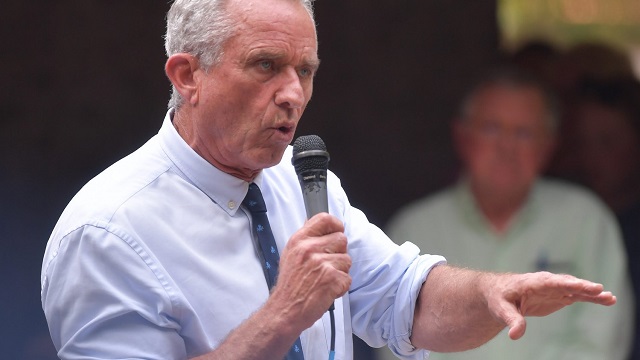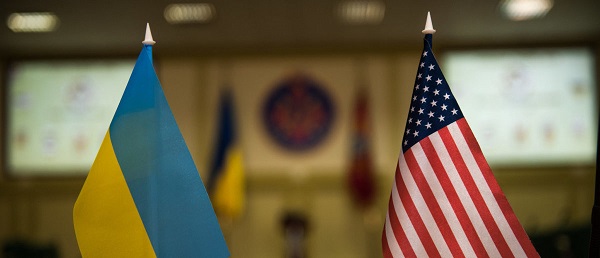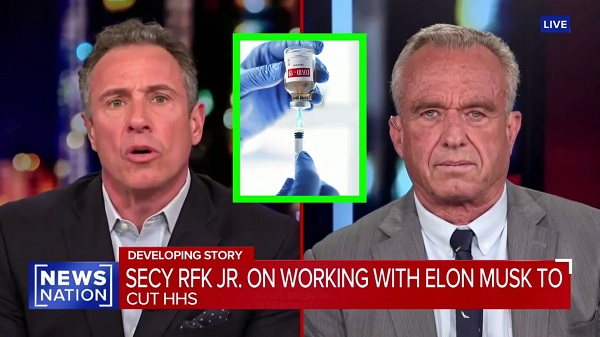Brownstone Institute
Evidence of Early Spread in the US: What We Know

From the Brownstone Institute
BY
In Sir Arthur Conan Doyle’s short story “Silver Blaze,” Sherlock Holmes famously solved a murder case by noting a dog that didn’t bark.
Gregory (Scotland Yard detective to Holmes): “Is there any other point to which you would wish to draw my attention?”
Holmes: “To the curious incident of the dog in the night-time.”
Gregory: “The dog did nothing in the night-time.”
Holmes: “That was the curious incident.”
The “official” timeline of the spread of the novel coronavirus has been false from the very beginning. The “dog that didn’t bark” is the fact officials have refused to sincerely investigate the copious evidence of “early spread.”
When events and activities that clearly should have happened obviously did not happen, a truth-seeking detective would ask several common-sense questions.
For example: Why didn’t these activities take place? Are America’s trusted officials perhaps hiding something, and, if so, why? Should certain people and certain organizations be considered the primary suspects in one of the most shocking crimes in world history?
In previous articles, I identified 17 known Americans who possess antibody evidence of being infected by the novel coronavirus months before the virus was supposed to be circulating in America. Three of these Americans had antibody evidence of infection by November 2019.
I also recently identified at least seven other Americans who claim to have had Covid symptoms in November or December 2019 who state they later received positive antibody results. I’ve thus identified at least 24 known Americans who very likely had Covid at some point in the year 2019. Also and significantly, federal officials never interviewed any of these people.
Today’s deep dive into “early spread” evidence focusses on 106 other Americans who also had antibody evidence of early spread. These 106 Americans tested positive for Covid antibodies in a CDC study of Red Cross blood donors.
While the “Red Cross Blood Study” received a fair amount of media coverage when belatedly published on November 30, 2020, the “narrative-changing” or “seismic” implications of this study have still not been given the weight they deserve.
Conclusions flowing from this analysis include the following:
* By late December 2019, more than 7 million Americans had likely been infected by the coronavirus… more than three months before the lockdowns of mid-March 2020, lockdowns implemented to “slow” or “stop” the spread of a virus that had spread across the country and world many months earlier.
* “Probable” cases of Covid had already occurred in at least 16 U.S. states by January 1st, 2020 – weeks or months before the first “confirmed” case of Covid in America was recorded January 19, 2020.
- Antibody studies of archived blood in Italy and France also support the hypothesis that that virus had infected large numbers of people in these two nations as early as September 2019.
Key unanswered questions include:
Why was the Red Cross blood study the only antibody study of blood samples collected by blood bank organizations?
Why did it take so long to publish the results of this one Red Cross blood study?
When did officials test this blood and when did U.S. policy makers know the results?(This is literally a trillion-dollar question. Also, If this blood had been tested earlier, millions of lives might have been saved).
Why didn’t officials interview the 106 Americans who had antibody evidence of prior infection?
It’s possible at least some public health experts may have intentionally concealed evidence of early spread. Reasons prompting this disturbing conclusion are presented below.
The first known knowable
Between December 13-16, 2019, 1,912 Americans in the states of California, Oregon and Washington donated blood via the American Red Cross. Another 5,477 Americans also donated blood via the Red Cross between Dec. 30, 2019 and January 17, 2020. These donors were from the states of Massachusetts, Michigan, Rhode Island, Connecticut, Wisconsin and Iowa.
At some point, the CDC decided it should test these 7,389 samples of “archived” blood for Covid antibodies. When this took place – and why it took so long for this to happen – are two of many still-unanswered questions.
DISCUSSION – Tranche 1 (California, Oregon and Washington)
Of the 1,912 samples tested for Covid antibodies, 39 were positive for IgG and/or IgM antibodies.
The above represents 2.04 percent of the total samples from this tranche. In samples tested from the Red Cross’s Northern California district, 2.4 percent of the sera samples tested positive for Covid-19 via an ELISA assay.
If this was a representative sample of the American population, 2.04 percent would translate to approximately 7.94 million Americans who had already been infected by this virus in the weeks before Dec. 13-16. (Math: American population of 331 million x 0.024 percent = 7.94 million).
If we include both tranches, the 106 positive donors represents 1.43 percent of the larger “sample group.” This seroprevalence rate would translate to 4.73 million Americans nationwide being infected by some time in early January 2020.
We’re not supposed to perform this extrapolation
Public health officials working overtime to hype the fear factor must appreciate the fact journalists in the mainstream press did not perform the extrapolations I just performed above.
This particular “dog that didn’t bark” (a press that wouldn’t perform common-sense extrapolations) is probably explained by language/guidance the authors included in the study.
From the study: Findings “may not be representative of all blood donors or donations in these states and the findings may not be generalizable to all blood donors during the donation dates reported here. Therefore, population-based seroprevalence estimates or inference on magnitude of infections on a national or state level cannot be made.”
I did note the authors used the words “may not be generalizable to all blood donors during the donation dates reported here.” To me, this choice of words does not rule out the possibility these results may be generalizable to the larger population.
The authors’ reasons that readers should not “generalize” the results to the entire population are unconvincing. A random group of blood donors is about as good a sample as one can perform. For example, this was NOT a “biased” sample of people who thought they may have had Covid earlier.
This sample almost certainly undercounts virus prevalence in these states
In mainstream press stories about this study, all of them report as fact that this study dates the possible beginning of virus spread to December 2019. This is not accurate. The findings, for reasons outlined below, actually reveal that Americans were becoming infected in November 2019 or (almost-certainly) even earlier.
Regarding the possibility the sample may have under-counted true prevalence, the following points should be considered.
Some of the donors, especially those who had asymptomatic cases and never even knew they were sick, may not have had time to develop antibodies by the time they donated blood. Per one study, “the average time to detectable neutralization was 14.3 days post on-set of symptoms (range 3-59 days.)”
Also, it’s possible some of the donors may have had detectable levels of antibodies at an earlier date, but those antibodies had “waned” or “faded” and were no longer “detectable” at the time they gave blood samples.
Furthermore, all regular blood donors know that they should not donate blood if they have recently been sick. This deduction further backs up the possible date of infection for some “positive” donors by at least two weeks.
Also, backing up the true “infection date” of many of the donors is the fact that 32.23 percent of the donors who tested positive for “neutralizing antibodies” tested negative for the IgM antibody and positive for the IgG antibody.
Per many studies, IgM-positive antibodies only persist for approximately one month. That is, after 30 days, those who were previously infected by Covid will test negative for IgM antibodies. However, IgG antibodies can last for many months, years or, in some people, perhaps a lifetime.
Per the Red Cross study, 32 percent of donors were negative-IgM but positive IgG, which suggests that approximately one-third of this sample were infected a month or more before they donated blood. This combination of antibody results would push likely infection dates back to October (or even September) for some percentage of positive donors.
We don’t know when these people in the three Western states (or the other six Midwestern and Northeast states) may have been infected – but for probably most of them it would have been many weeks or even months before they donated blood.That is, the “Red Cross blood study” provides compelling evidence that early spread in America probably occurred by at least early October and perhaps even September.
What does the word ‘spread’ really mean?
Also, the fact that positive samples were found in ALL nine states (California, Oregon, Washington, Massachusetts, Michigan, Wisconsin, Iowa, Connecticut and Rhode Island) by itself strongly suggests virus “spread.” Question: How could a virus be infecting people in nine widely-dispersed states without first “spreading?”
To these nine states, we can add seven other states (New Jersey, Florida and Alabama) from my first round of stories and now also New York, Texas, Nebraska andNorth Carolina from my most recent story where readers with antibody evidence contacted me. This gives us 16 states where this allegedly non-existent or “isolated” virus had infected people before the first official case in America.
I would also note that whatever virus made many of these people “sick” spread between family members. For example, at least four married couples infected each other and/or at least one child. Mayor Michael Melham says “many” people at the conference where he first became sick with Covid symptoms also became sick at the same time, which, to this layman’s definition, connotes virus “spread.”
To the above numbers, we could add all the unknown individuals who infected these people … as well as the unknown individuals who infected these unknown individuals.
It should also be noted that the Red Cross blood study was not a perfect sample as blood donors are much older than the median age. In this sample, the median age was 52 – 13 years older than the U.S. median age of 38.6. Common sense tells us that older retirees do not interact with nearly as many people on a daily basis as more active younger people.
I’ve also come to believe it’s possible that officials who “authorized” or approved official antibody tests may have manipulated the tests to ensure fewer “confirmed” or “positive” cases, a result that would minimize any fallout from larger percentages of positives. A difference of 1 or 2 percent in seroprevalence estimates might not seem like much. However, in real terms, this would represent 3.3 to 6.6 million additional early cases.
For these reasons, I believe the number of Americans who’d been infected by the novel coronavirus in the year 2019 is notably higher than 1.43 or 2.04 percent of America’s population.
The Dog that Didn’t Bark Evidence
Regarding the Red Cross antibody study, several points deserve much greater attention than they’ve received. The following unanswered questions address these points:
Why was only ONE study of archived Red Cross blood performed?
By December 31, 2019, every American public health official was acutely aware that Chinese officials had reported an outbreak of a novel new type of “pneumonia” virus to the World Health Organization.
It’s my belief at least some U.S. officials either knew or had compelling reasons to suspect this months earlier. (This topic/theory will be explored in future articles).
Even if one accepts that the Dec. 31st notification was the first American officials had heard of a possible global pandemic, wouldn’t one of the first reactions of these officials be to test archived blood to see if this virus might have been spreading in this country?
One answer to this question might be that America’s scientific community simply did not have an antibody test capable of testing for antibodies in early January. This may be true, but, per my research, creating an antibody test for any virus poses no formidable challenge to smart and motivated scientists. If such an assay wasn’t available in the early weeks of the official pandemic, one should have certainly been available by the end of January.
Also, I’ve read several studies authored by Chinese scientists who were performing antibody tests in January 2020. For example, this study “was published on January 24, 2020” and includes the following sentence:
“Additional evidence to confirm the etiologic significance of 2019-nCoV in the Wuhan outbreak include … detection of IgM and IgG antiviral antibodies …”
Surely, in the face of an unfolding “global crisis,” America’s top scientific minds could have done the same thing (or just borrowed the technology from the Chinese).
The Red Cross didn’t have any more spare blood?
It must also be true that plenty of “archived” blood samples from throughout the country were available for testing (and the Red Cross is not the only organization that serves as a blood bank for hospitals).
In the face of a national emergency, it would seem odd if all of these organizations presented serious objections to some of their stored blood being “repurposed” for important research.
If two tranches of blood were donated for science, couldn’t other tranches of Red Cross blood have similarly been donated? Why was no Red Cross blood collected before December 13th tested for antibodies? Why was blood collected and tested from only nine states? Why not all 50 states? Why wasn’t blood from the same locations tested two or three weeks later (or from earlier dates) … or two months later to see if the percentage of positives might be increasing?
The public doesn’t know the answer to any of these questions and apparently no reporter asked officials these questions.
Again, projects that would seem like common-sense to most people … did NOT take place.
When did officials test this blood and when did U.S. policy makers know the results?
One piece of information not included in the report is the date the archived blood was finally tested. This is actually (and literally) a trillion-dollar question.
Another “known knowable” is the date in which lockdowns commenced – roughly March 13th 2020, the date Fauci, Birx et all “snuck in” the provisions of what the non-pharmaceutical intervention would actually entail (basically closing all non-essential businesses and organizations).
One might ask if the decision to lock down the country to “slow” or “stop’ the “spread” of this virus would have been authorized if it had been known that Americans in nine states already had antibody-evidence of infection by early January (or December or November)? Asked differently, if these results had been known by, say, late February 2020 how would officials justify the lockdowns?
Late February would be 73 days after the first tranche of Red Cross blood had been collected from donors and 58 days after the Wuhan Outbreak became known. How long does it really take to transport 1,900 units of blood to the CDC’s preferred testing lab and then test such a small batch of samples for antibodies? If this was a national emergency and scientists and lab workers were working 24-7, it would not have taken 58 days.
Perhaps the only reason this would not have occurred is that no member of the U.S. Scientific Bureaucracy thought of doing this …. a possibility this author finds hard to believe.
An alternative explanation is that officials intentionally delayed the testing of this blood so there would be no reason to call off the lockdowns. Here the assumption is that if Americans learned that many millions of Americans had already been infected with this virus by early December – and nobody in the entire country had even noticed – maybe the fear and panic that did ensue would not have ensued.
Why did it take so long to publish the results of this one Red Cross blood study?
Not only was the California-Washington-Oregon tranche of blood not tested in time to avert the lockdowns (at least as far as the public knows), the study that did take place wasn’t published until November 30, 2020. This was almost 12 months (!) after 1,900 people had donated blood Dec. 13-16.
In my research, I found numerous examples of serology studies that were conceived, conducted and the results published in a matter of weeks (In one case in Idaho in a matter of days).
Tucker Carlson thinks like I do
I’m a big fan of Tucker Carlson’s contrarian monologues, but I missed the fact he posed some of my same questions in a commentary that aired in the days after the Red Cross blood study was finally published.
Tucker: “So clearly, what we have been told for almost a year about the origins of the coronavirus is not true.
“Why are we just learning this now, a month after a presidential election? We’ve had reliable antibody tests since the summer, yet no one thought to test Red Cross blood samples until now?”
“Why weren’t elected officials demanding a coherent account of where this virus that has changed American history forever came from, how it got to the United States and how it spread through our population? Why don’t we know that yet?”
My only quibble with Tucker’s essay is that the American scientific community would have had “reliable” antibody tests far before “summer.”
(Another personal hypothesis: I also think “authorized” antibody tests were not made widely available until late April to conceal evidence of early spread, another theory I will expound on in a future article).
Carlson pointed out that as of December 2020, Americans still didn’t know where
this virus that “changed American history forever came from (or) how it got to the United States and how it spread through our population? Why don’t we know that yet?”
Carlson asked these questions two years ago … and Americans still have no answer.
As to Carlson’s question as to “why we don’t know that yet?” I can offer one possible answer: Because the people who know the answer must know that their fingerprints are on the creation of this virus. If the truth became known, they might be facing charges of “crimes against humanity.”
If the dog did bark and tell the sordid tale, it wouldn’t be one felon Sherlock Holmes nabbed, but a swamp full of felons. As it turns out, the felons are almost guaranteed protection by the massive numbers of accomplices (“stakeholders” in the authorized narrative) who are also interested in the truth never being revealed.
Why didn’t officials interview the 106 Americans who had antibody evidence of prior infection?
Any public health official genuinely interested in tracking down the earliest known cases would have rushed to interview every one of these 106 Americans.
The obvious goal would be to ascertain if any of these individuals happened to experience Covid-like symptoms weeks or months before they donated blood. If they had, available medical records (and perhaps even preserved tissue samples) might support this diagnosis. “Contact tracers” chasing down possible “Case Zeros” could have also found out if any of these individuals’ close contacts might have been sick.
But this did not happen (yet another dog that didn’t bark). Instead, we learn from the language in the study that blood donors were “de-identified” for unstated reasons.
Presumably, this was done to protect the medical privacy of these individuals. However, it’s hard to imagine a scenario where an American citizen in January or February 2020 would have been offended if a public servant investigating the origins of the century’s greatest pandemic asked him or her a few questions.
This hypothetical excuse would also be shown to be a canard by the fact that public health officials in France also performed an antibody study of archived stored blood. This study (summarized below) also found copious evidence of early spread, including French citizens who had antibody evidence of infection in early November 2019.
However, in France, unlike in America, public health officials did take the time to interview some of the positive subjects.
French Antibody Study found 3.9 percent of residents had antibody evidence of early spread
The French study selected and tested 9,144 serum samples collected betweenNovember 4, 2019 and March 16, 2020 in participants living in the 12 mainland French regions.
Three-hundred and fifty-three (3.9%) participants were ELISA-S positive, 138 were undetermined and 8653 were negative (undetermined and negative, 96.1%). The proportion of ELISA-S positive increased from 1.9% (42 of 2218) in November and 1.3% (20 of 1534) in December to 5.0% (114 of 2268) in January, 5.2% (114 of 2179) in February and 6.7% (63 or 945) in the first half of March.
A few observations/comments:
The percentage of positive samples (3.9 percent) of French participants is more than double the rate of the American Red Cross study (1.44 percent among 7,392 donors). The total number of positive cases (353) is more than three times greater than was found in the smaller Red Cross study (106 positive samples).
The American Red Cross study found “positives” in all nine states sampled and the French study found positives in all 12 mainland French regions … thus the results of both studies strongly suggest that the virus had spread across both countries.
In France, two percent (1.99 percent) of those studied had antibody evidence of infection by November 2019 – approximately four months before the global lockdowns. Perhaps surprisingly, the rates went down in December but then spiked to 5.0 percent in January and kept rising in February 5.2 percent) and had reached 6.7 percent in the first half of March (before the lockdowns).
The population of France in 2020 was 67.38 million. This means 6.7 percent of the population already had evidence of infection before the lockdowns commenced. Extrapolated to the entire French population, this would equate to 4.51 million French citizens. For context, the first three “confirmed” cases of Covid in France are still recorded as January 24, 2020.
No “pre-pandemic” serology study including archived blood collected in February 2020 was performed in America. If 5.2 percent of Americans had antibody evidence of infection by February (as was the case in France), this would equate to 17.21 million Americans.
French public officials did interview some early spread possibilities
From the study: “Participants with both ELISA-S and SN positive tests in serum sampled before February 1, 2020 were interviewed to identify potential exposure to SARS-CoV-2 infection. A trained investigator collected standardized information on clinical details … and any remarkable event in close contacts (e.g. unexplained pneumonia).
According to the French study, 13 people tested positive with “neutralizing antibodies” (a higher standard than just plain IgM or IgG positives) “between November 5, 2019 and January 30, 2020.”
“Table 1 describes the serological results in these 13 participants, among whom 11 were interviewed.
Of the 11 subjects who were interviewed, eight (8) – 73 percent – were either sick themselves or had close contacts with someone who was sick with Covid-like symptoms. For purposes of illustration, three of these individuals’ findings are presented below:
“Person 3 – Sampled in November 2019: Positive with Covid symptoms. Also noted: Her partner was sick with intense cough in October 2019 …”
“Person 6 – blood drawn November 2019 … Travel in Spain in early November. She had daily encounters with a family member who had a respiratory illness of unknown origin between October and December. She suffered from dysgeusia, hyposmia, and cough before the sample was taken, but could not remember the date of illness …”
“Person 7: Positive in November with symptoms. The participant and his partner were sick with a severe cough in October 2019. He had a follow-up serology at the end of July, 2020. ELISA-S = 3.82. (Note: This means this person received TWO positive antibody tests).
The above information provides another benefit of interviewing people who have antibody evidence of early infection – namely, officials can re-test these individuals at different points in the future to see how long antibodies last. Furthermore, if a large percentage of these early spread candidates did not later develop PCR-confirmed cases, this would suggest they do, in fact, have “natural immunity” (which would be further evidence of an earlier infection).
Italy Antibody Study is eye-opening
The most eye-opening “pre-pandemic” antibody study was carried out by a team of academic researchers in Italy.
The main text: “SARS-CoV-2 RBD-specific antibodies were detected in 111 of 959 (11.6%) individuals, starting from September 2019 (14%), with a cluster of positive cases (>30%) in the second week of February 2020 and the highest number (53.2%) in Lombardy. This study shows an unexpected very early circulation of SARS-CoV-2 among asymptomatic individuals in Italy several months before the first patient was identified, and clarifies the onset and spread of the coronavirus disease 2019 (COVID-19) pandemic.”
“Table 1 reports anti-SARS-CoV-2 RBD antibody detection according to the time of sample collection in Italy. In the first 2 months, September–October 2019, 23/162 (14.2%) patients in September and 27/166 (16.3%) in October displayed IgG or IgM antibodies, or both.”
“The first positive sample (IgM-positive) was recorded on September 3 in the Veneto region …
The 959 recruited patients came from all Italian regions, and at least one SARS-CoV-2–positive patient was detected in 13 regions – more evidence of wide-spread and “early,” person-to-person transmission.
More from the study: “Notably, two peaks of positivity for anti-SARS-CoV-2 RBD antibodies were visible: the first one started at the end of September, reaching 18% and 17% of IgM-positive cases in the second and third weeks of October, respectively. A second one occurred in February 2020, with a peak of over 30% of IgM-positive cases in the second week.”
According to the study’s authors: “Finding SARS-CoV-2 antibodies in asymptomatic people before the COVID-19 outbreak in Italy may reshape the history of pandemic.”
My comment: I’ve thought the same thing with all the articles I’ve written that presented copious evidence of “early spread.” However, I clearly thought wrong. Apparently, for some reason, the “early spread” dog ain’t barking.
Reprinted from the author’s Substack
Brownstone Institute
If the President in the White House can’t make changes, who’s in charge?

From the Brownstone Institute
By
Who Controls the Administrative State?
President Trump on March 20, 2025, ordered the following: “The Secretary of Education shall, to the maximum extent appropriate and permitted by law, take all necessary steps to facilitate the closure of the Department of Education.”
That is interesting language: to “take all necessary steps to facilitate the closure” is not the same as closing it. And what is “permitted by law” is precisely what is in dispute.
It is meant to feel like abolition, and the media reported it as such, but it is not even close. This is not Trump’s fault. The supposed authoritarian has his hands tied in many directions, even over agencies he supposedly controls, the actions of which he must ultimately bear responsibility.
The Department of Education is an executive agency, created by Congress in 1979. Trump wants it gone forever. So do his voters. Can he do that? No but can he destaff the place and scatter its functions? No one knows for sure. Who decides? Presumably the highest court, eventually.
How this is decided – whether the president is actually in charge or really just a symbolic figure like the King of Sweden – affects not just this one destructive agency but hundreds more. Indeed, the fate of the whole of freedom and functioning of constitutional republics may depend on the answer.
All burning questions of politics today turn on who or what is in charge of the administrative state. No one knows the answer and this is for a reason. The main functioning of the modern state falls to a beast that does not exist in the Constitution.
The public mind has never had great love for bureaucracies. Consistent with Max Weber’s worry, they have put society in an impenetrable “iron cage” built of bloodless rationalism, needling edicts, corporatist corruption, and never-ending empire-building checked by neither budgetary restraint nor plebiscite.
Today’s full consciousness of the authority and ubiquity of the administrative state is rather new. The term itself is a mouthful and doesn’t come close to describing the breadth and depth of the problem, including its root systems and retail branches. The new awareness is that neither the people nor their elected representatives are really in charge of the regime under which we live, which betrays the whole political promise of the Enlightenment.
This dawning awareness is probably 100 years late. The machinery of what is popularly known as the “deep state” – I’ve argued there are deep, middle, and shallow layers – has been growing in the US since the inception of the civil service in 1883 and thoroughly entrenched over two world wars and countless crises at home and abroad.
The edifice of compulsion and control is indescribably huge. No one can agree precisely on how many agencies there are or how many people work for them, much less how many institutions and individuals work on contract for them, either directly or indirectly. And that is just the public face; the subterranean branch is far more elusive.
The revolt against them all came with the Covid controls, when everyone was surrounded on all sides by forces outside our purview and about which the politicians knew not much at all. Then those same institutional forces appear to be involved in overturning the rule of a very popular politician whom they tried to stop from gaining a second term.
The combination of this series of outrages – what Jefferson in his Declaration called “a long train of abuses and usurpations, pursuing invariably the same Object” – has led to a torrent of awareness. This has translated into political action.
A distinguishing mark of Trump’s second term has been an optically concerted effort, at least initially, to take control of and then curb administrative state power, more so than any executive in living memory. At every step in these efforts, there has been some barrier, even many on all sides.
There are at least 100 legal challenges making their way through courts. District judges are striking down Trump’s ability to fire workers, redirect funding, curb responsibilities, and otherwise change the way they do business.
Even the signature early achievement of DOGE – the shuttering of USAID – has been stopped by a judge with an attempt to reverse it. A judge has even dared tell the Trump administration who it can and cannot hire at USAID.
Not a day goes by when the New York Times does not manufacture some maudlin defense of the put-upon minions of the tax-funded managerial class. In this worldview, the agencies are always right, whereas any elected or appointed person seeking to rein them in or terminate them is attacking the public interest.
After all, as it turns out, legacy media and the administrative state have worked together for at least a century to cobble together what was conventionally called “the news.” Where would the NYT or the whole legacy media otherwise be?
So ferocious has been the pushback against even the paltry successes and often cosmetic reforms of MAGA/MAHA/DOGE that vigilantes have engaged in terrorism against Teslas and their owners. Not even returning astronauts from being “lost in space” has redeemed Elon Musk from the wrath of the ruling class. Hating him and his companies is the “new thing” for NPCs, on a long list that began with masks, shots, supporting Ukraine, and surgical rights for gender dysphoria.
What is really at stake, more so than any issue in American life (and this applies to states around the world) – far more than any ideological battles over left and right, red and blue, or race and class – is the status, power, and security of the administrative state itself and all its works.
We claim to support democracy yet all the while, empires of command-and-control have arisen among us. The victims have only one mechanism available to fight back: the vote. Can that work? We do not yet know. This question will likely be decided by the highest court.
All of which is awkward. It is impossible to get around this US government organizational chart. All but a handful of agencies live under the category of the executive branch. Article 2, Section 1, says: “The executive Power shall be vested in a President of the United States of America.”

Does the president control the whole of the executive branch in a meaningful way? One would think so. It’s impossible to understand how it could be otherwise. The chief executive is…the chief executive. He is held responsible for what these agencies do – we certainly blasted away at the Trump administration in the first term for everything that happened under his watch. In that case, and if the buck really does stop at the Oval Office desk, the president must have some modicum of control beyond the ability to tag a marionette to get the best parking spot at the agency.
What is the alternative to presidential oversight and management of the agencies listed in this branch of government? They run themselves? That claim means nothing in practice.
For an agency to be deemed “independent” turns out to mean codependency with the industries regulated, subsidized, penalized, or otherwise impacted by its operations. HUD does housing development, FDA does pharmaceuticals, DOA does farming, DOL does unions, DOE does oil and turbines, DOD does tanks and bombs, FAA does airlines, and so on It goes forever.
That’s what “independence” means in practice: total acquiescence to industrial cartels, trade groups, and behind-the-scenes systems of payola, blackmail, and graft, while the powerless among the people live with the results. This much we have learned and cannot unlearn.
That is precisely the problem that cries out for a solution. The solution of elections seems reasonable only if the people we elected actually have the authority over the thing they seek to reform.
There are criticisms of the idea of executive control of executive agencies, which is really nothing other than the system the Founders established.
First, conceding more power to the president raises fears that he will behave like a dictator, a fear that is legitimate. Partisan supporters of Trump won’t be happy when the precedent is cited to reverse Trump’s political priorities and the agencies turn on red-state voters in revenge.
That problem is solved by dismantling agency power itself, which, interestingly, is mostly what Trump’s executive orders have sought to achieve and which the courts and media have worked to stop.
Second, one worries about the return of the “spoils system,” the supposedly corrupt system by which the president hands out favors to friends in the form of emoluments, a practice the establishment of the civil service was supposed to stop.
In reality, the new system of the early 20th century fixed nothing but only added another layer, a permanent ruling class to participate more fully in a new type of spoils system that operated now under the cloak of science and efficiency.
Honestly, can we really compare the petty thievery of Tammany Hall to the global depredations of USAID?
Third, it is said that presidential control of agencies threatens to erode checks and balances. The obvious response is the organizational chart above. That happened long ago as Congress created and funded agency after agency from the Wilson to the Biden administration, all under executive control.
Congress perhaps wanted the administrative state to be an unannounced and unaccountable fourth branch, but nothing in the founding documents created or imagined such a thing.
If you are worried about being dominated and destroyed by a ravenous beast, the best approach is not to adopt one, feed it to adulthood, train it to attack and eat people, and then unleash it.
The Covid years taught us to fear the power of the agencies and those who control them not just nationally but globally. The question now is two-fold: what can be done about it and how to get from here to there?
Trump’s executive order on the Department of Education illustrates the point precisely. His administration is so uncertain of what it does and can control, even of agencies that are wholly executive agencies, listed clearly under the heading of executive agencies, that it has to dodge and weave practical and legal barriers and land mines, even in its own supposed executive pronouncements, even to urge what might amount to be minor reforms.
Whoever is in charge of such a system, it is clearly not the people.
Brownstone Institute
Hysteria over Robert F. Kennedy Jr.’s Promise to Make Vaccines Safer

From the Brownstone Institute
By
“People are reacting because they hear things about me that aren’t true, characterizations of things I have said that are simply not true. When they hear what I have to say, actually, about vaccines, everybody supports it.”
Robert F. Kennedy, Jr. has been confirmed as Secretary of the US Department of Health and Human Services.
Within hours, my news feed was populated with angsty articles hand-wringing about the future of vaccines under Kennedy, whom legacy media and the establishment are certain would confiscate life-saving vaccine programs, raising the spectre of mass waves of illness and death.
In particular, this quote from Senator Mitch McConnell (R-KY), the only Republican who voted against Kennedy’s confirmation, appeared over and over again:
“I’m a survivor of childhood polio. In my lifetime, I’ve watched vaccines save millions of lives from devastating diseases across America and around the world. I will not condone the re-litigation of proven cures, and neither will millions of Americans who credit their survival and quality of life to scientific miracles.”
Yet, I could not find one piece of mainstream coverage of this quote that mentioned the astonishing fact that 98% of polio cases in 2023, the most recent year for which we have full data, were caused by the polio vaccine.
You read that correctly. In 2023, 12 wild polio cases were recorded (six in Afghanistan, six in Pakistan), with a further 524 circulating vaccine-derived cases, mostly throughout Africa. This trend is in keeping with data from the previous several years.
An important contextualising detail, wouldn’t you think?

The cause of this polio resurgence is that the world’s poor are given the oral polio vaccine (OPV), which contains a weakened virus that can replicate in the gut and spread in feces, causing vaccine-derived outbreaks.
People in rich countries get the inactivated polio vaccine (IPV), which does not contain live virus and therefore does not carry the risk of spreading the very disease it’s vaccinating against.
The World Health Organization (WHO) and vaccine-promoting organisations say that the way out of the problem is to vaccinate harder, as the argument goes that outbreaks only occur in under-vaccinated communities.
This may be well and good, but the total omission of the fact from media coverage that the goalposts have shifted from eradicating wild polio (not yet complete but nearly there, according to the WHO) to eradicating vaccine-derived polio (the main problem these days) underscores that this is why hardly anyone who knows anything trusts the media anymore.
A member of my extended family has polio. It’s nasty and life-altering and I wouldn’t wish it on anyone.
That’s why I would hope that any vaccines given would be safe – contracting polio from the supposedly preventative vaccine is the worst-case scenario, second only to death.
This is Kennedy’s expressly stated aim.
“When people actually hear what I think about vaccines, which is common sense, which is vaccines should be tested, they should be safe, everyone should have informed consent,” he said at his confirmation press conference.
“People are reacting because they hear things about me that aren’t true, characterisations of things I have said that are simply not true.
“When they hear what I have to say, actually, about vaccines, everybody supports it.”
Grown-ups who support vaccines can walk and chew gum. From the point of view of the public health establishment, the polio vaccine has prevented millions of cases and has nearly eradicated the disease.
At the same time, the world’s poorest are afflicted with polio outbreaks which we can work to prevent, and the safety of all polio vaccine products on the market should be subject to the rigorous standards applied to all other medicines.
Unless you think that poor people don’t matter, in which case the status quo might suit you fine.
Republished from the author’s Substack
-

 2025 Federal Election1 day ago
2025 Federal Election1 day agoPoilievre To Create ‘Canada First’ National Energy Corridor
-

 Censorship Industrial Complex2 days ago
Censorship Industrial Complex2 days agoWelcome to Britain, Where Critical WhatsApp Messages Are a Police Matter
-

 2025 Federal Election1 day ago
2025 Federal Election1 day agoJoe Tay Says He Contacted RCMP for Protection, Demands Carney Fire MP Over “Bounty” Remark
-

 2025 Federal Election2 days ago
2025 Federal Election2 days agoChinese Election Interference – NDP reaction to bounty on Conservative candidate
-

 2025 Federal Election1 day ago
2025 Federal Election1 day agoHong Kong-Canadian Groups Demand PM Carney Drop Liberal Candidate Over “Bounty” Remark Supporting CCP Repression
-

 Daily Caller15 hours ago
Daily Caller15 hours agoBiden Administration Was Secretly More Involved In Ukraine Than It Let On, Investigation Reveals
-

 2025 Federal Election1 day ago
2025 Federal Election1 day agoFixing Canada’s immigration system should be next government’s top priority
-

 2025 Federal Election1 day ago
2025 Federal Election1 day agoLondon-Based Human Rights Group Urges RCMP to Investigate Liberal MP for Possible Counselling of Kidnapping













